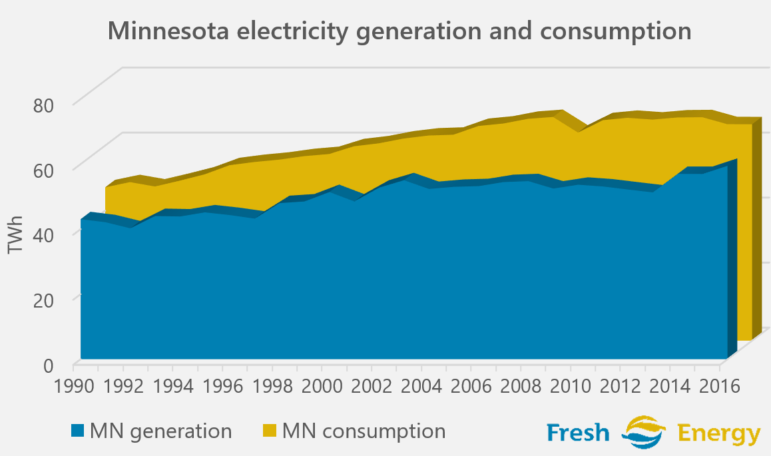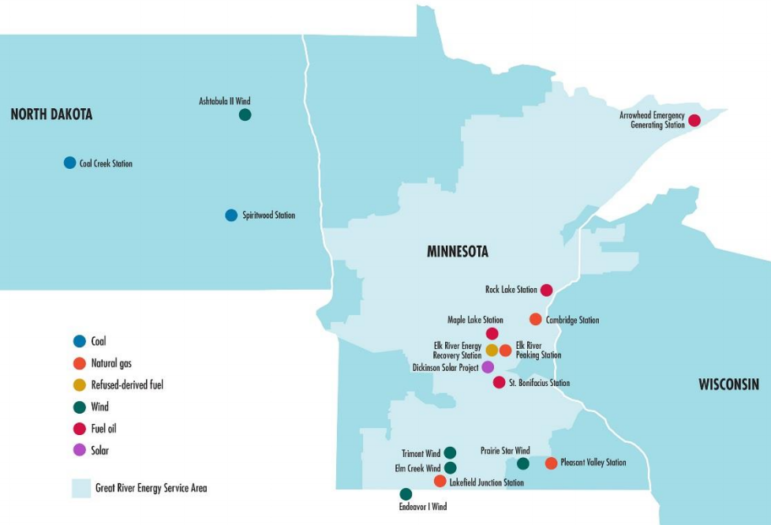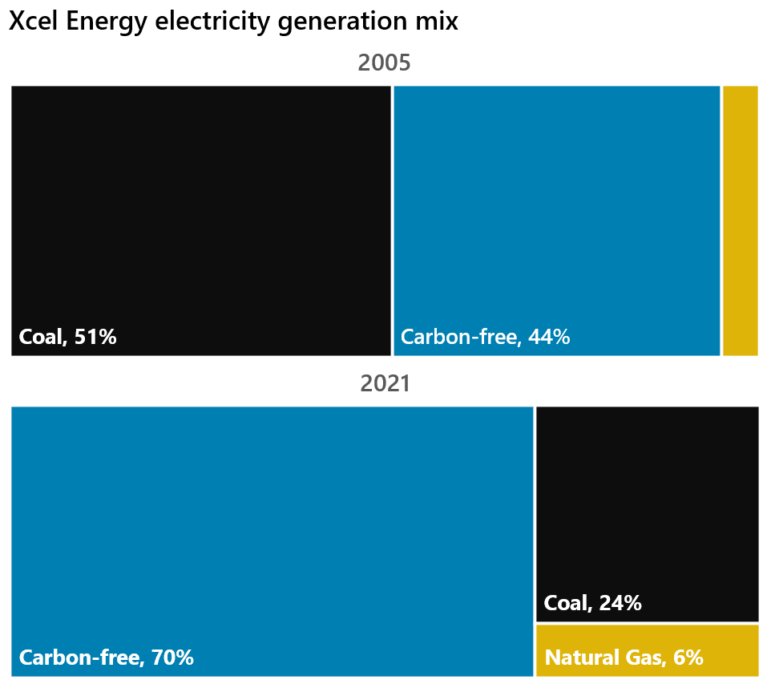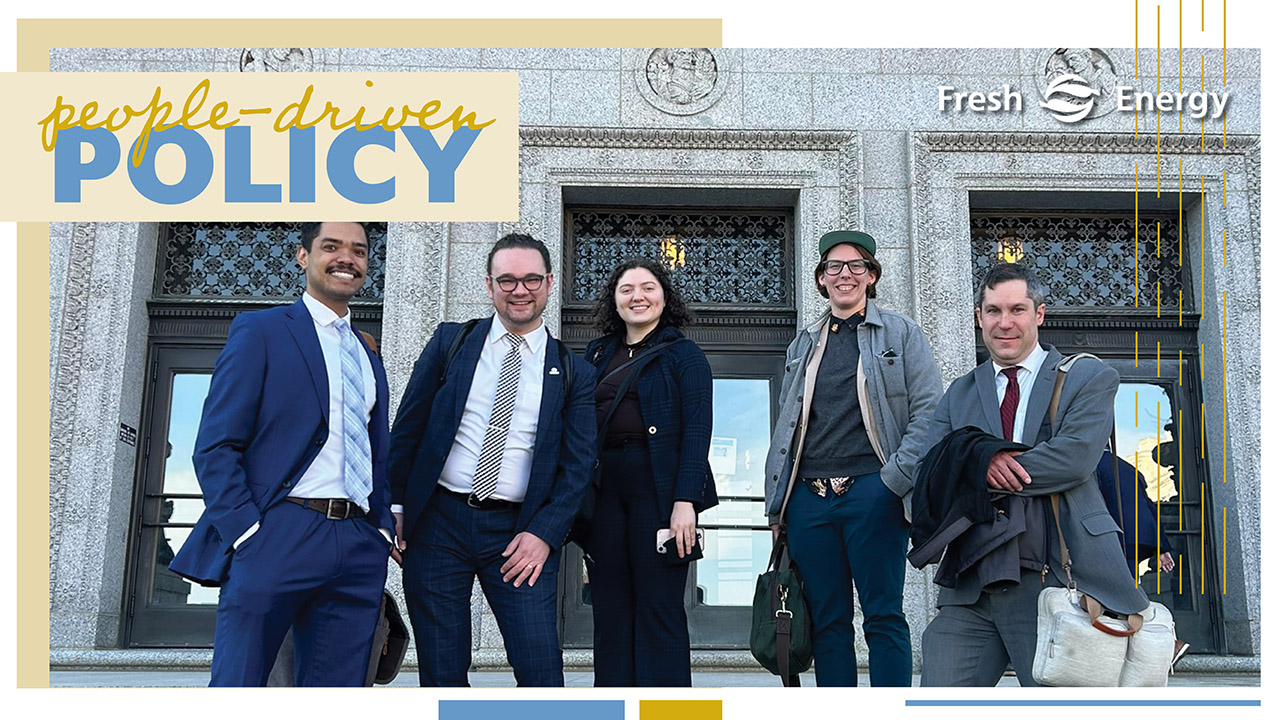
Minnesota is in the midst of a clean energy revolution. As heralded recently by Minnesota Public Radio and the Star Tribune, a full 25 percent of the electricity generated in Minnesota in 2017 came from renewable energy—up from just 5 percent in 2003. But, as remarkable as this progress is, looking only at in-state generation paints an incomplete portrait of the electricity consumed in Minnesota, because nearly 20 percent of the electricity we use is generated outside the state. Below, we take a more comprehensive look at where our electricity comes from.
Electricity generation in Minnesota
Electricity generation in Minnesota has changed dramatically over the last decade. Coal, long the workhorse of the Minnesota electric grid, has fallen from two-thirds of electricity generation in 2003 to less than 40 percent in 2017. Over the same period, generation from wind and solar increased from less than 2 percent to nearly 20 percent. When combined, renewables and nuclear—which produces no greenhouse gas emissions—generated nearly half of the electricity in Minnesota in 2017.

Electricity imports
Remarkable as this progress is, looking only at in-state generation paints an incomplete portrait of the electricity consumed in Minnesota. For decades, Minnesota has been a “net importer” of electricity, meaning we consume more electricity than is generated within state lines. Over the past five years, roughly 18 percent of the electricity consumed in Minnesota was generated out of state.

So where do these electricity imports come from? All over! Great River Energy—which provides electricity to the cooperative utilities that serve most of Greater Minnesota—is an excellent example. As the map below shows, Great River Energy gets electricity from a wide variety of resources, mostly from coal plants in North Dakota, but also natural gas plants in Minnesota and wind farms in Minnesota, Iowa, and North Dakota. In addition, Great River Energy also contracts for electricity from hydroelectric plants in Manitoba, Canada. Great River Energy is not alone in this practice—all of the state’s utilities get their electricity from an assortment of technologies in a variety of locations.

Minnesota’s Renewable Energy Standard
Minnesota’s Renewable Energy Standard (RES) requires the state’s electric utilities to get at least 25 percent of their electricity from renewables by 2025, and requires Xcel Energy to achieve 30 percent by 2020. This policy was instrumental in driving renewable energy procurement in the upper Midwest and making Minnesota a national leader in the clean energy economy.
Though the goal seemed ambitious when the law was passed, the stunning declines in the cost of wind and solar generation have allowed many of the state’s utilities to exceed their RES requirements, all while saving customers money. Minnesota Power—which supplies numerous communities across northern Minnesota—has been getting roughly 25 percent of its electricity from renewables since 2015, fulfilling its 2025 RES requirement a full ten years ahead of schedule. Great River Energy got 20 percent of its electricity from renewables in 2016 and plans to get 30 percent from renewables by 2021. Otter Tail Power—which serves customers across western Minnesota—gets about 16 percent of its electricity from renewables today, with plans to procure 29 percent by 2031. Xcel Energy—the state’s largest electric utility—got 25 percent of its electricity from renewables in 2016. With its planned wind farm additions, Xcel will get 33 percent of its electricity from wind by 2021; moreover, including its nuclear, hydro, biomass, and solar generation, a full 70 percent of Xcel’s electricity will be carbon-free by 2021.

Looking forward
While 25 percent of in-state generation came from renewables in 2017, the electricity mix that serves the state isn’t quite there. But, thanks to policies like the RES, the state is well on its way to its goal of getting 25 percent of its electricity from renewables. Now that utilities are already, or well on their way to, meeting the original RES requirements, and considering the rapid advancement of carbon-free electricity technologies, it’s time to give our utilities the next target to plan for. In order to meet our bipartisan, economy-wide emissions reductions goals, we need concrete targets in state law that can drive us to 50 percent renewable energy by 2030, like the bipartisan legislation that was introduced in 2017.
Fresh Energy will continue working with our partners across the state to spread the word about Minnesota’s clean energy success so far and build support for putting a new bold stake in the ground to move our energy system forward.

